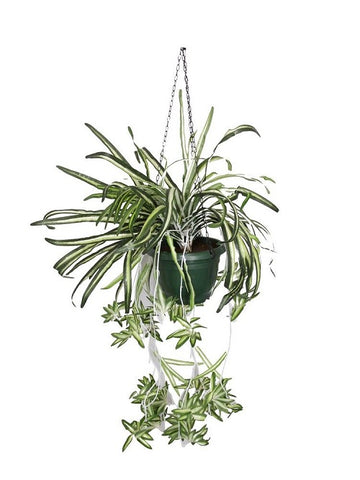Black Summer brought the issue of indoor air pollution to the fore of everyone’s minds. Australians realised how much we value having good air quality in our homes, schools, hospitals, offices, shopping centres, and warehouses. This led to a massive uptake—and shortage—in air purifiers and face masks across NSW and the ACT. It also made every second person believe that they were an amateur atmospheric chemist, recommending all sorts of weird and wonderful solutions to air pollution at low or no cost!
With a new bushfire season already underway, it’s high time to look at the facts of indoor air pollution. What should we be concerned about? Why should we be concerned? And what does the latest science say about cleaning air indoors? Let’s take a deep dive and find out.
THE SOURCES OF INDOOR AIR POLLUTION
Fresh air is great and overwhelmingly beneficial. However, unless you live in a sealed dome with no windows (think Simpsons Movie, but for the opposite reasons), air from the great outdoors can be one of the biggest sources of pollution. Those of us who live or work near a quarry or mine or have coal trains driving past their property are already well aware of this!
Everyone everywhere is exposed to a range of pollutants every single year. The commonest sources, according to the NSW Environment Protection Authority (EPA), are bushfires, dust storms, sea salt, and pollen. To this we add neighbourhood sources like chimneys, bonfires, fertilisers, and agriculture generally. You know what it's like: you're sitting on the sofa, windows open, enjoying a nice day, then suddenly the wind changes and—BAM!—your house reeks of God knows what!

Funnily enough, indoor air pollution also comes from indoor and backyard sources. Not all of these pollutants are necessarily harmful—for example, cooking smells and scented soy wax candles. But some you need to look out for include wood-fired heaters, cigarette smoke, incense, paints, aerosols, solvents, dust, and diesel and petrol for garden tools. You need to be especially careful if you’re considering open burning of wood, rubbish, or vegetation on your property, not only for the air quality impacts but because it may be illegal without a permit.
A special mention for people with allergies is pets. Sorry, labradoodle owners, but scientists have been proving for years that there’s no such thing as a hypoallergenic dog. Or cats for that matter. That's because the allergens don’t emanate from the coats of these animals, but rather the proteins found in their urine and saliva. It’s not hard to imagine how pervasively these spread throughout the house!

WHY INDOOR AIR POLLUTION MATTERS
No amount of air pollution is safe. For some, it is deadly.
In 2018, the World Health Organization told us that ‘3.8 million people die prematurely from illness attributable to the household air pollution’, and that’s just for cooking-related pollution!
But let’s narrow our focus to Australia. Here, wood-fired heaters are, literally, the worst. Three scientists recently wrote in The Conversation that wood heater smoke in winter is ‘the single biggest air pollutant in New South Wales and the ACT’ and is ‘[l]ike having a truck idling in your living room’. One wood-fired heater used for one year costs the health system $3,800, which, given one in ten Australians uses wood-fired heaters as their main source of heating (at least in 2014), adds up to $3.4 billion across the country.

And that’s assuming that every person using a wood-fired heater follows the law and uses clean, dry hardwood as fuel. Some people grab waste wood from construction and demolition sites instead, thinking they can save some time and money. But this wood is often treated with copper chrome arsenate, which, according to the scientists at The Conversation, ‘can increase incidents of liver, bladder, and lung cancers, and reduce the production of red and white blood cells, leading to fatigue, abnormal heart rhythm, and blood-vessel damage’.
Another scientist writing in the journal Atmospheric Pollution Research revealed in 2011 that the average Australian wood-fired heater emits a lot of methane and black carbon particles (more than reverse cycle air-conditioning and even gas heaters). This contributes to the greenhouse effect which, according to the US Institute of Medicine, makes existing indoor environmental health problems worse and creates new ones to worry about.
Also remember that pollutants interact. For example, one large-scale study in China looked at a certain type of head and neck cancer, nasopharyngeal carcinoma (NPC), and ‘observed a significant addictive interaction between frequent incense burning and heavy cigarette smoking on NPC risk’. The same study reminds us that air pollutants can be even more threatening if you have a family history of certain cancers or diseases.
Finally, the NSW EPA reminds us that ‘older adults, children, and people with existing health conditions’ are especially vulnerable to the health effects of air pollution, no matter the source. So, plenty of reasons to be concerned about indoor air pollution!
HOW YOU CAN PROTECT YOURSELF AND CLEAN YOUR AIR
Let’s be clear: it’s practically impossible to have perfectly clean air.
But, while we each must live with a minimum acceptable standard of pollution indoors and out, there are things we all can do to help reduce our exposure. Again, no amount of air pollution is safe.
So what can you do? Here are six ideas:
1. CLOSE YOUR DOORS AND WINDOWS WHEN OUTDOOR AIR QUALITY IS POOR OR HAZARDOUS
This is a no-brainer. If your area is thick with bushfire smoke, shut your doors and windows!
The NSW Government also provides a real-time air quality index service and you can choose to subscribe to updates. When you check the weather, the Bureau of Meterology will tell you whether there's going to a poor air quality event to look out for as well.
2. ALLOW VENTILATION WHEN OUTDOOR AIR IS FRESH
Trapping all your indoor pollutants inside your home is not a good idea. When the air is fresh (and it is most of the time in most places in Australia), you should open your doors and windows. Let the pollutants dissipate!
3. CLEAN YOUR HOUSE FREQUENTLY AND REGULARLY
I think we’ve all had the experience of looking underneath our beds or behind our furniture and finding obscene growths of dust and detritus!
The best remedy against this is, unfortunately, more housework. Make sure you vacuum at least once a week, or more often (ideally daily) if you have pets or young children or both.
Also, consider wearing a mask when you do a deep clean. This includes not just when you're vacuuming problem areas, but also when you're using strong cleaning products or even when you do home maintenance projects like painting. If you're vulnerable to air pollutants, it's especially important to double check that your mask has been independently assessed and certified for its quality.
4. MAKE THE SWTICH FROM WOOD-FIRED HEATERS
After all the evidence we just went through, this should be a no-brainer!
We’ll admit, it’s hard to deny that wood-fired heaters create an amazing vibe. For many of us, they remind us of our childhoods or are otherwise nostalgic. Unfortunately, cancers don’t care about our nostalgia!
5. BUY A GOOD AIR PURIFIER (OR AT LEAST AN AIR QUALITY SENSOR)
If your family includes people with vulnerabilities like asthma and allergies, or you live in an area with notorious air pollution problems, you may want to consider buying an air purifier. Choice has some great independent advice helping you decide whether you need an air purifier and, if so, which air purifiers are the best value for money.
If you don’t want to spend the money on a purifier, consider buying a sensor instead. These are often hundreds of dollars cheaper and provide you accurate, real-time information about air pollution in your home.
Note that many of the higher-quality air purifiers also come with sensors, so it is unlikely that you will need to buy both.
6. IF YOU HAVE ALLERGIES, THINK CAREFULLY ABOUT PETS
Pets are lovely. But, given hypoallergenic cats and dogs don’t exist, you may want to reconsider having furry companions in future if you have serious allergies. (You'll also obviate the need to think about pet-friendly furniture.)
Remember: not having a cat or dog doesn’t mean you can’t have any pets whatsoever. Consider birds, reptiles, rocks, or even an aquarium! It's a different experience but can be incredibly rewarding.
AN IMPORTANT NOTE: INDOOR PLANTS ARE GREAT, BUT THEY WON’T MAKE A DIFFERENCE TO YOUR AIR QUALITY
I’ll admit, I’ve been guilty of spouting this myth in our blogs. But since reading this meta-study by Cummings and Waring in the Journal of Exposure Science & Environmental Epidemiology, I’ve learned that indoor pot plants do not improve indoor air quality in modern buildings.
The myth started when people played Chinese whispers with the 1989 NASA Clean Air Study (and the lead author published a provocatively-titled (and incredibly lucrative) book for laypeople, How to Grow Fresh Air). This study—conducted to investigate one way astronauts might be able to enjoy cleaner air in small, sealed space stations—quickly evolved into a myth that plants of a certain size, species, or distribution would filter the air in your home by a certain percentage.
Today, we know that it's just not true. Looking at volatile organic compounds (VOCs), Cummings and Waring checked out twelve different studies about plants as air filters and expressed very high confidence that indoor plants make practically no difference in typical buildings (in the US), given the way modern buildings are designed. They say that, depending on the species, you would need to place between 10 and 1000 plants per square metre on a building’s floor space for plant filtration to be as effective as ordinary ventilation. That's a lot of plants!
But the study isn’t a total repudiation of the air-cleaning power of indoor greenery. The authors suggest that green walls ‘may create a more effective means of VOC removal because of their size, exposed rhizosphere, and controlled and continuous airflow’. However, more studies are needed before we can be highly confident about that. Plus, green walls are too expensive for most of us!

Image courtesy of Patrick Blanc.
Also, it’s not a one-way street. Plants emit spores, bioparticles, and simple gases like oxygen, but they are also capable of emitting VOCs themselves when under stress. (This sounds scary, but there's no evidence suggesting we should be concerned. These emissions are mainly for plant communication and to attract herbivore-eating predators to help plants save themselves. But hey if you don’t take care of your plants and feel like you need the barest justification to go artificial, then this is one!)

To summarise: plants are great for many, many reasons. Just don't expect them to do anything for your indoor air quality!
TO CONCLUDE…
Boy, that was a long blog! Congratulations for making it this far.
Being a furniture retailer, air pollution is not normally the sort of subject we normally cover in our blogs. But, as a family-oriented company, we feel an obligation to do what we can to separate facts from fiction and help everyone keep their families happier and healthier. That's part of life in the family home, after all!
If you’ve found this blog helpful, tap or click here to check out our 100+ other blogs (including our companion blog on noise pollution). We cover topics ranging from trans-seasonal styling to indoor lighting, coffee table books to custom-made furniture, multi-generational living to environmental sustainability, and a whole lot more!

